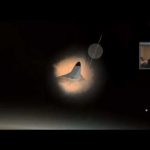Cassini, exploring Saturn: 15 Years of Exploration WWW.GOODNEWS.WS
This video highlights sights and sounds from the journey of NASA’s Cassini spacecraft. Cassini launched 15 years ago and has been exploring the Saturn system since 2004.
–
Cassini–Huygens is a flagship-class NASA-ESA-ASI robotic spacecraft sent to the Saturnsystem. It has studied the planet and its many natural satellites since arriving there in 2004, also observing Jupiter, the Heliosphere, and testing the theory of relativity. Launched in 1997 after nearly two decades of gestation, it includes a Saturn orbiter and an atmospheric probe/lander for the moon Titan called Huygens, which entered and landed on Titan in 2005. Cassini is the fourth space probe to visit Saturn and the first to enter orbit, and its mission is ongoing as of 2012.It launched on October 15, 1997 on a Titan IVB/Centaur and entered into orbit around Saturn on July 1, 2004, after an interplanetary voyage which included flybys of Earth, Venus, and Jupiter. On December 25, 2004, Huygens separated from the orbiter at approximately 02:00 UTC. It reached Saturn’s moon Titan on January 14, 2005, when it entered Titan’s atmosphere and descended downward to the surface. It successfully returned data to Earth, using the orbiter as a relay. This was the first landing ever accomplished in the outer Solar System.Sixteen European countries and the United States make up the team responsible for designing, building, flying and collecting data from the Cassini orbiter and Huygens probe. The mission is managed by NASA’s Jet Propulsion Laboratory in the United States, where the orbiter was assembled. Huygens was developed by the European Space Research and Technology Centre, whose prime contractor was Alcatel of France. Equipment and instruments for the probe were supplied by many countries. The Italian Space Agency(ASI) provided the Cassini probe’s high-gain radio antenna, and a compact and lightweight radar, which serves as a synthetic aperture radar, a radar altimeter, and a radiometer. On April 16, 2008, NASA announced a two-year extension of the funding for ground operations of this mission, at which point it was renamed to the Cassini Equinox Mission. This was again extended in February 2010 with the Cassini Solstice Mission continuing until 2017. The current end of mission plan is a 2017 Saturn impact. That same year, 2017, Juno will be de-orbited by a crash into Jupiter. That would mark the end of U.S. exploration of the outer planets, as no new missions are planned. ESA, however, has decided to send the Jupiter Icy Moon Explorer to three of Jupiter’s moons, which is planned to arrive there in 2030, and New Horizons may flyby at least one object beyond Pluto after 2015. Naming: It consists of two main elements: the ASI/NASA Cassini orbiter, named for the Italian-French astronomer Giovanni Domenico Cassini, (also known later as Jean-Dominique Cassini when he became a citizen of France), and the ESA-developed Huygens probe, named for the Dutch astronomer, mathematician and physicist Christiaan Huygens. It was commonly called Saturn Orbiter Titan Probe (SOTP) during gestation, both as a Mariner Mark II mission and generically. Huygens discovered Titan, and Cassini discovered a few more of Saturn’s moons.
Cassini, exploring Saturn: 15 Years of Exploration WWW.GOODNEWS.WS
Leave A Reply
You must be logged in to post a comment.









 Paranormal
Paranormal

